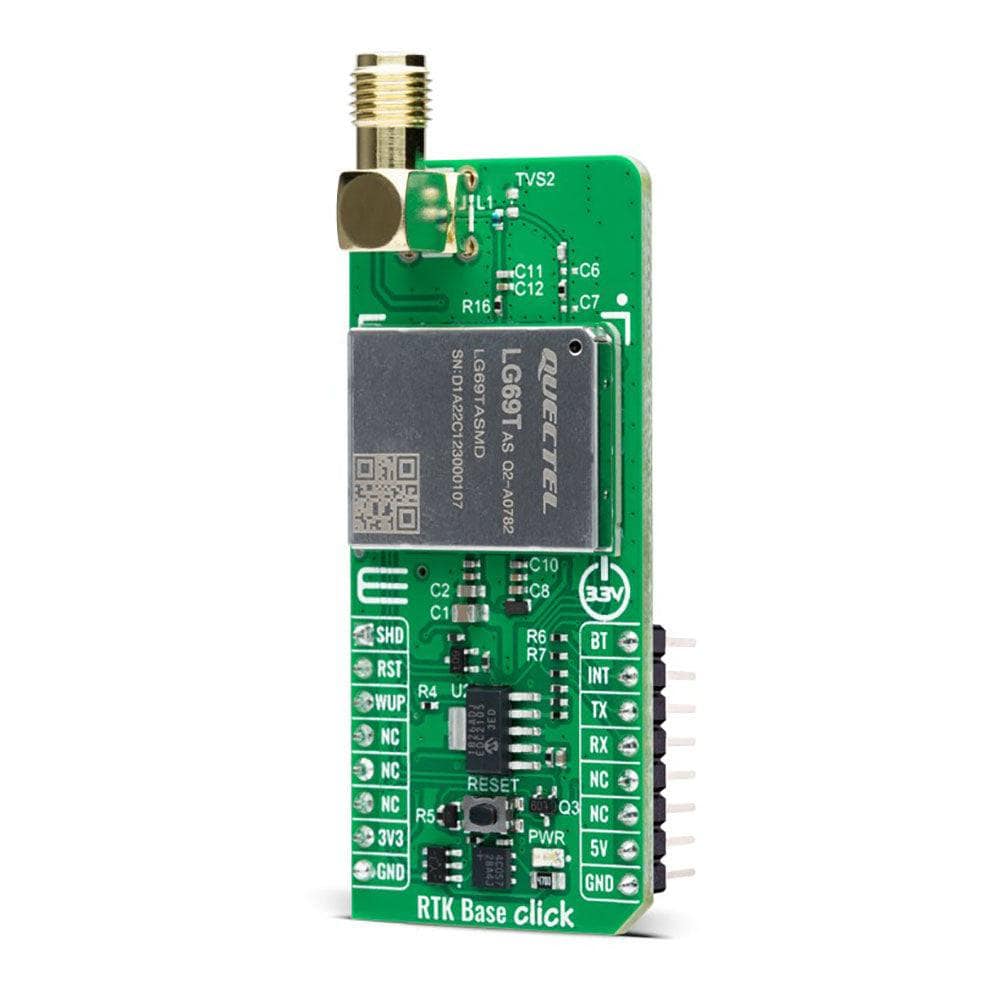
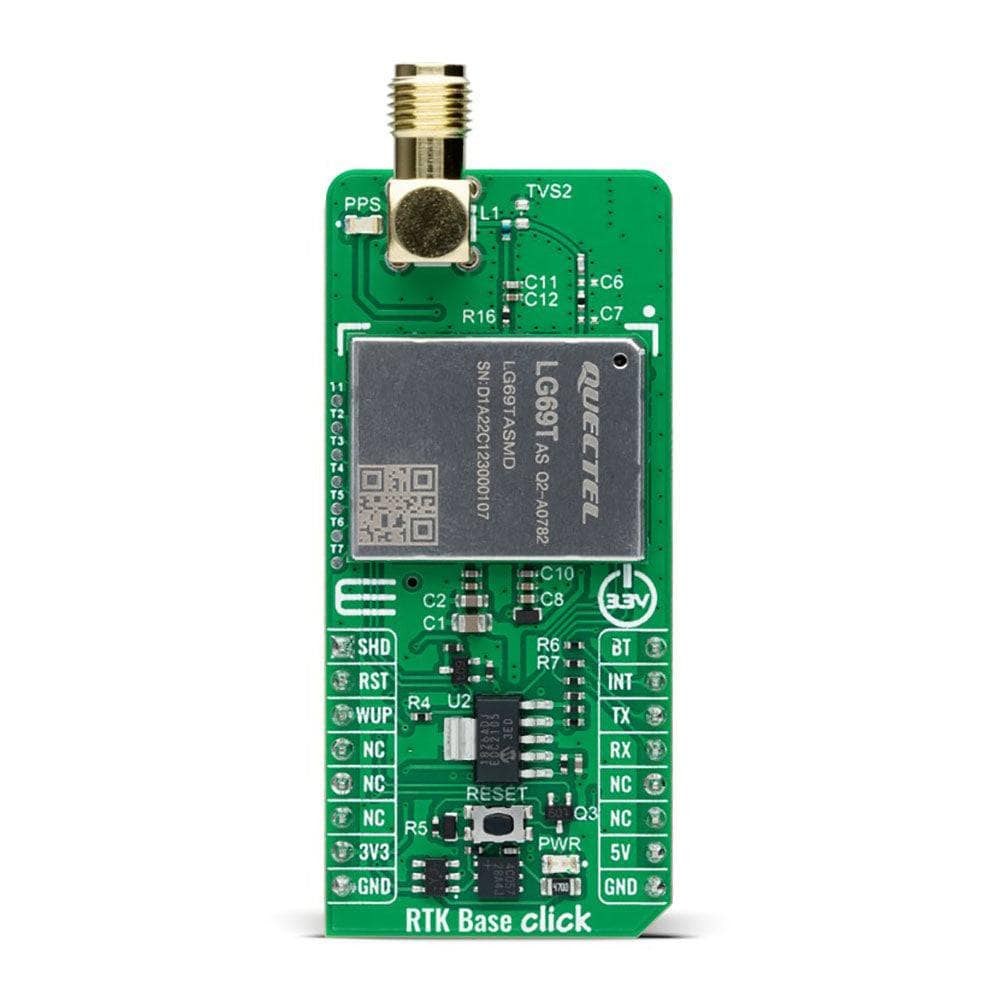
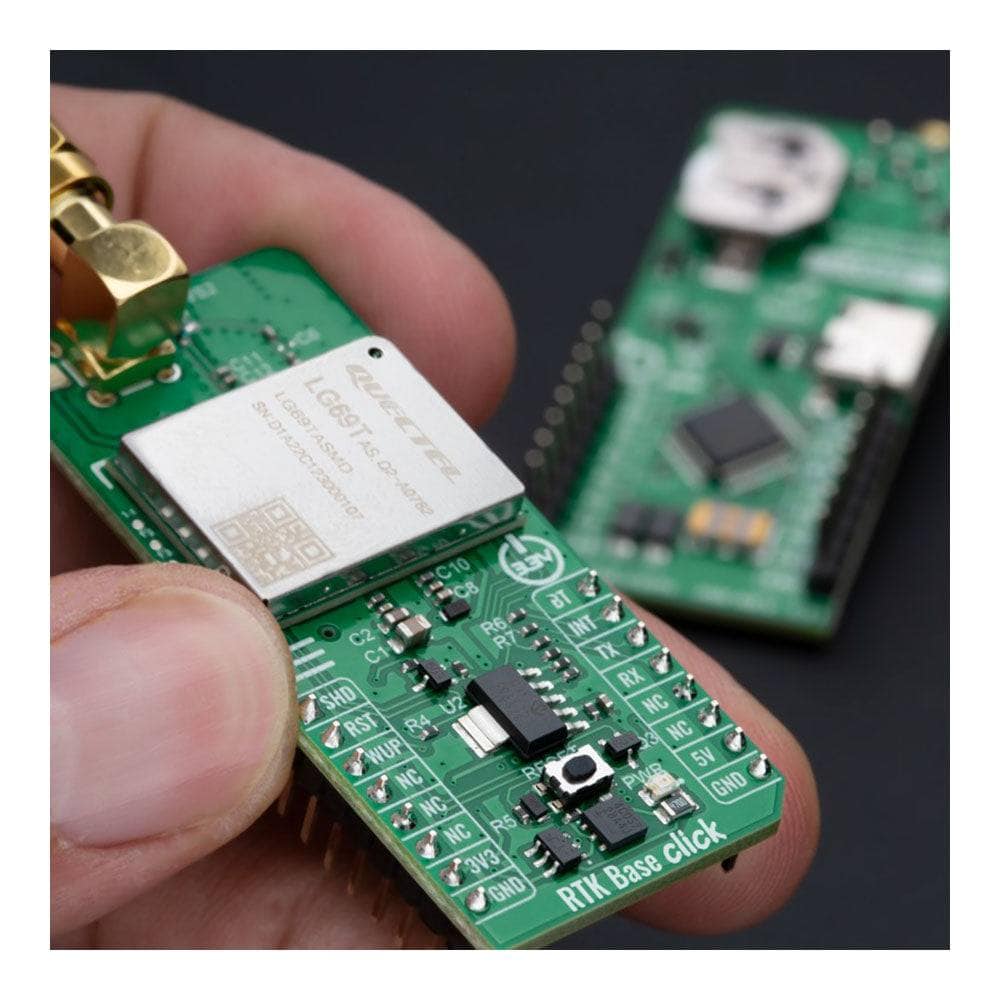
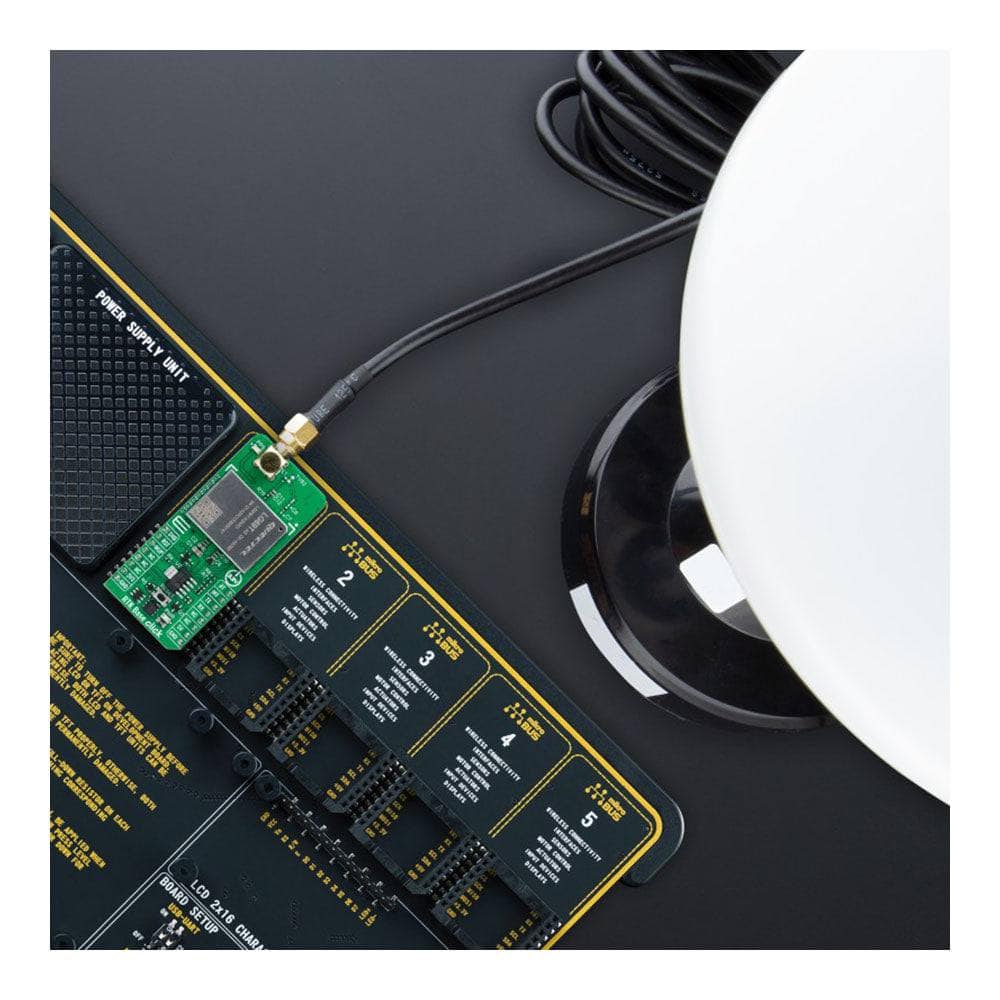
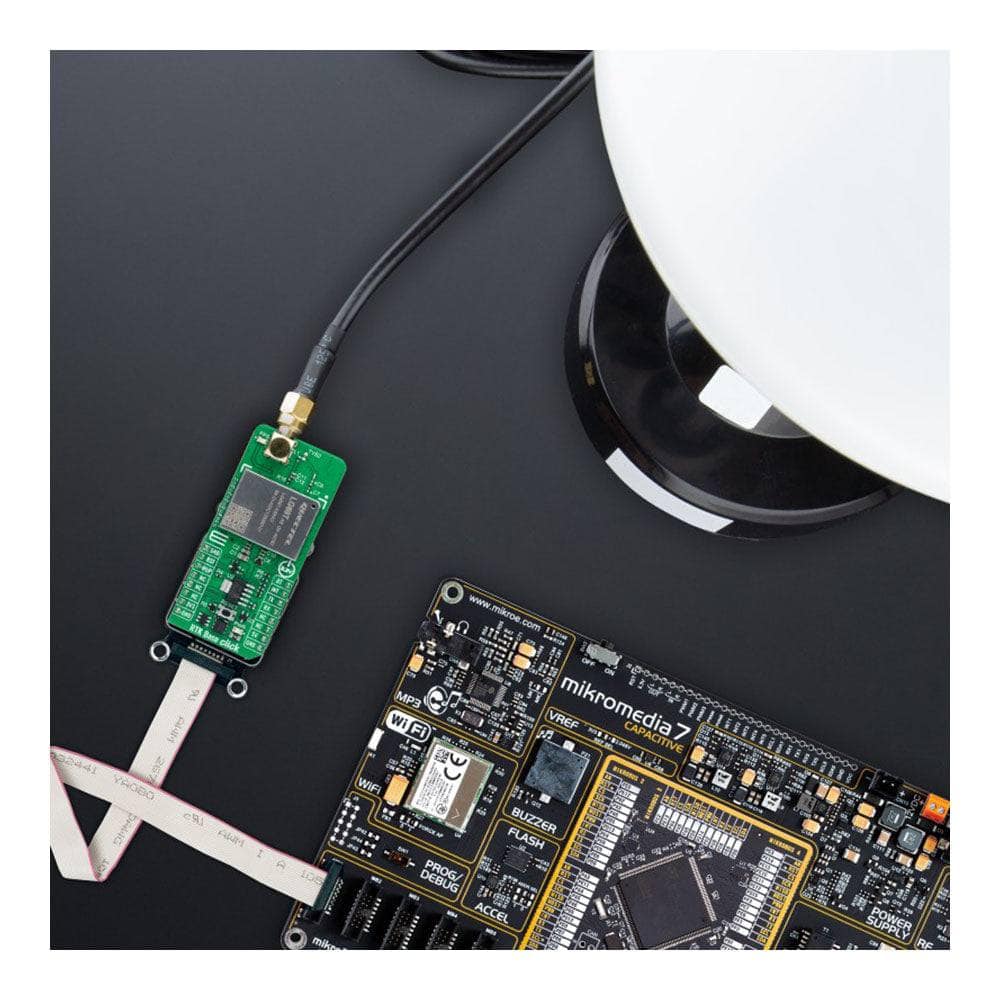
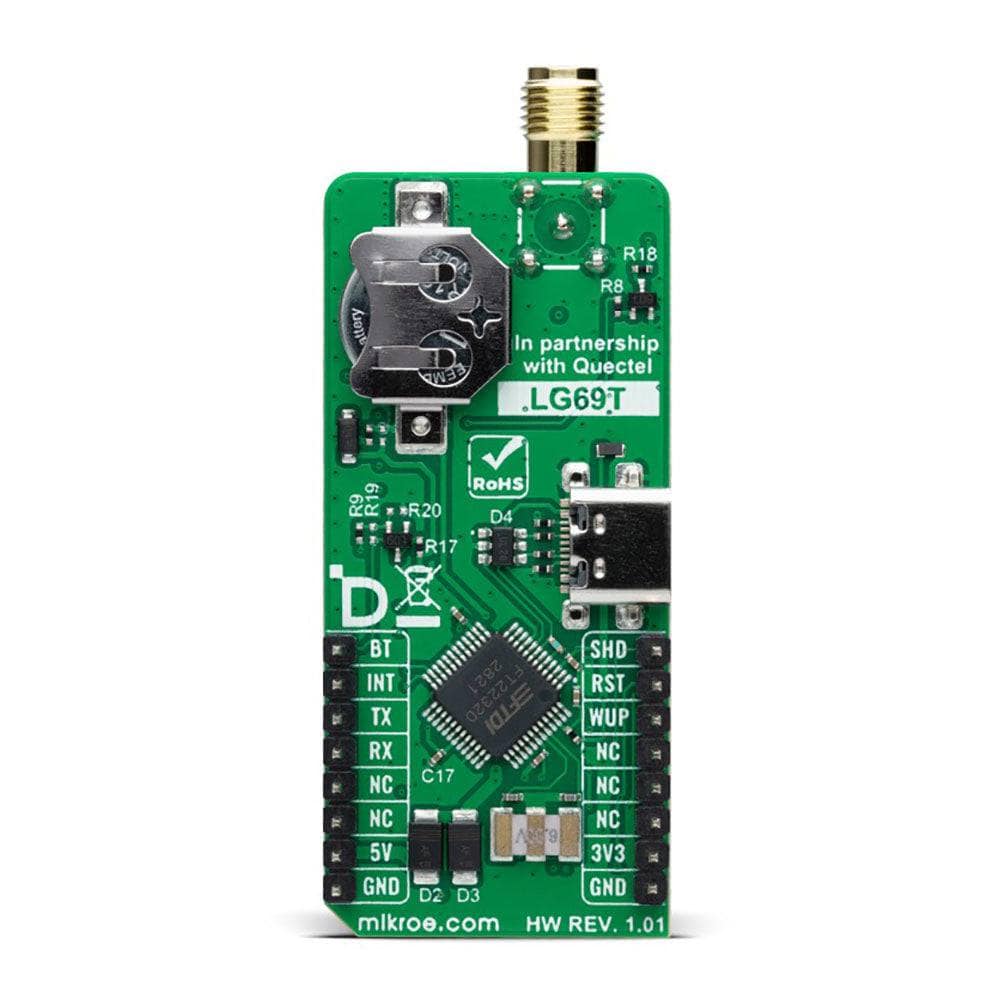
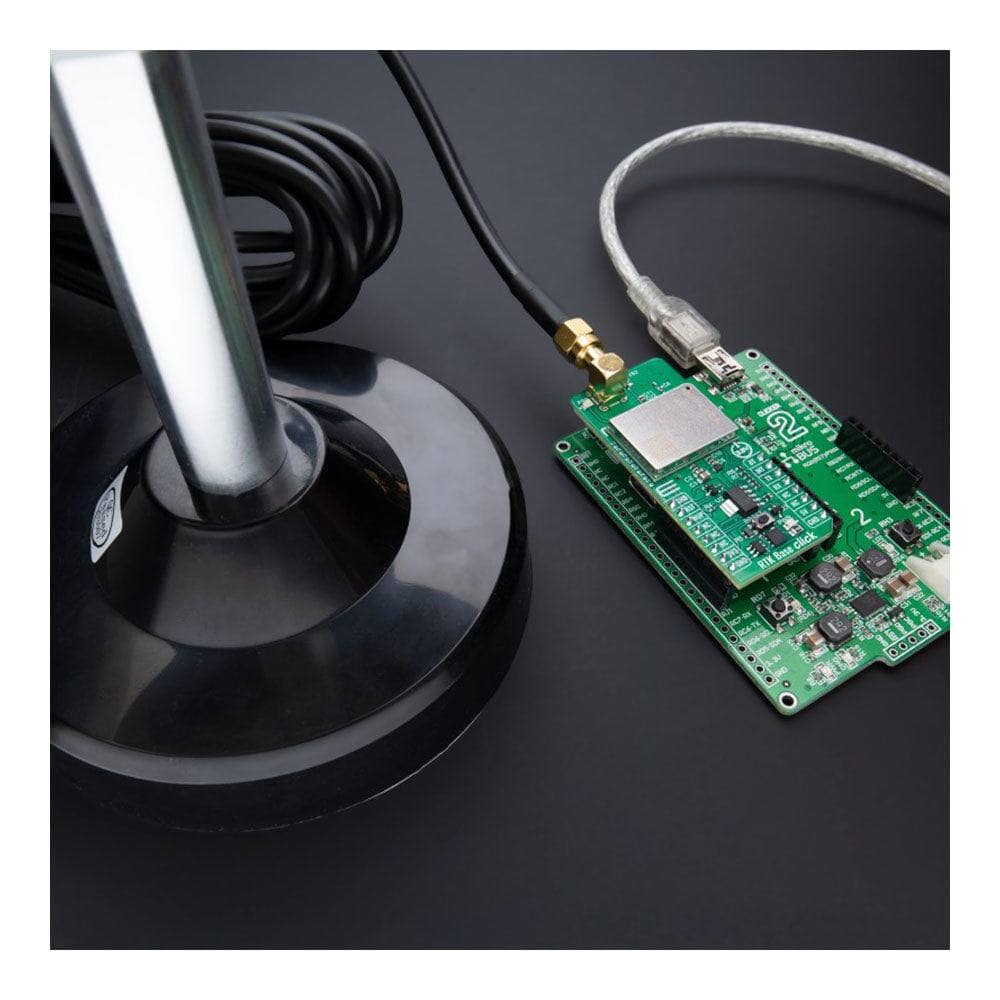
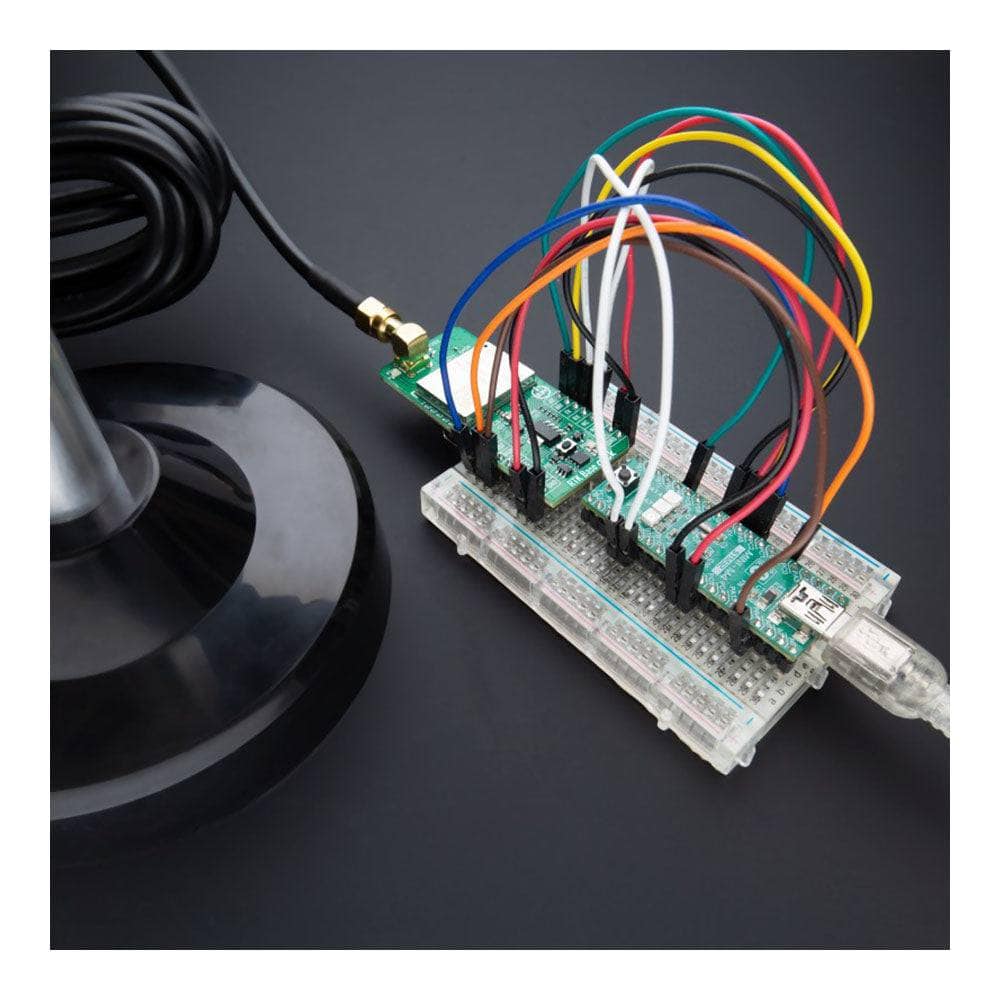
How Does The RTK Base Click Board™ Work?
The RTK Base Click Board™ is based on the LG69TASMD, a multi-constellation GNSS module featuring a high-performance and high-reliability positioning engine from Quectel Wireless Solutions, improving the positional accuracy of the compatible RTK Rover board. The LG69TASMD has a dual-band supporting up to 4 concurrent global constellations, features the fifth generation of STMicroelectronics® positioning receiver platform with 80 tracking and 4 fast acquisition channels, and Quectel's high-performance YG0063AA geodetic antenna.
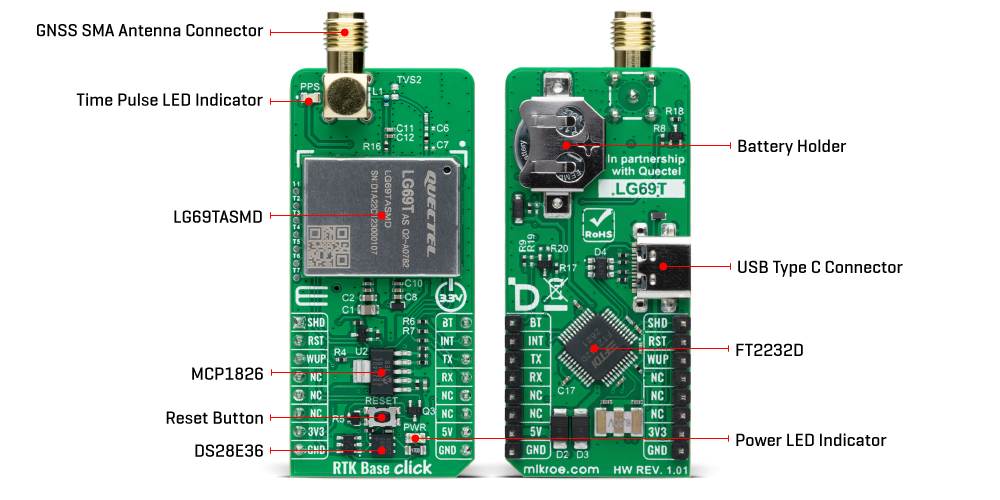
Designed according to the IATF 16949:2016 standard, the LG69TASMD comes with GPS+BDS+Galileo+QZSS as a default GNSS constellation and an integrated LNA for improved sensitivity. It can receive and track GPS L1 C/A and L5 and Galileo E1 and E5a signals centered at 1575.42MHz and 1176.45MHz, and BeiDou B1I and B2a signals centered at 1561.098MHz and 1176.45MHz. The ability to receive and track BeiDou signals in conjunction with GPS results in higher coverage, improved reliability, and better accuracy.
The RTK Base Click Board™ communicates with MCU using the UART interface with commonly used RX and TX pins alongside one data-ready pin (INT), which informs the host MCU to receive data when buffer transmission is full. It is also equipped with a USB type C connector, which allows the module to be powered and configured by a personal computer (PC) using FT2232D, a compact USB to a serial UART interface device designed to operate efficiently with USB host controllers.
The LG69TASMD module provides RTK data output as a base station, supporting static mode alongside fixed mode set through corresponding commands. It can use its previously measured coordinates of antenna position. If this coordinate has the best effect, this method can ensure that the rover achieves the best accuracy. The LG69TASMD can also self-survey in its coordinates in situations without using other methods to measure the base station antenna. With this mode, the user provides accuracy constraints and the shortest observation time.
In addition to the interface pins, this board uses a few additional mikroBUS™ pins. An active-low reset signal alongside an onboard RESET button, routed on the RST pin of the mikroBUS™ socket, performs a reset function of the module, while the SHD pin routed on the AN pin of the mikroBUS™ socket offers a switch operation to turn ON/OFF the power supply to the LG69TASMD.
The module can use Boot Download Mode for firmware update via the BT pin routed on the RST pin of the mikroBUS™ socket, alongside a blue LED indicator marked as PPS for time pulse signal information and indication. The module enters Normal operating mode by keeping the BT pin on a low logic state during the Startup sequence. Otherwise, when the pin is high during Startup, the module enters Boot Download Mode. A specific addition to this Click board™ is several testpoints that enable additional module features.
The RTK Base Click Board™ can operate with both 3.3V and 5V MCUs. As its main power supply, the LG69TASMD uses 3.3V obtained from the MCP1826 LDO but also has the possibility of using an additional backup power supply in the form of a coin-shaped battery. The board must perform appropriate logic voltage level conversion before using MCUs with different logic levels. However, the Click board™ comes equipped with a library containing functions and an example code that can be used as a reference for further development.
RTK TECHNOLOGY
The Global Navigation Satellite System (GNSS) is a widely deployed and accepted way to determine precise locations without the need for coverage or signal strength of cellular networks. GNSS combined with RTK is a solution that can realize precise real-time positioning, where positioning accuracy reaches the centimeter level. Quectel's ultra-compact, low-power GNSS modules, such as LG69T-AS and LG69T-AM, provided in the form of RTK Click boards™, cover the full range of requirements in high precision, dead reckoning, and timing for application scenarios as diverse as ADAS and self-driving, crewless flight, and smart agriculture.
In addition to the software support that MikroElektronika provides for this Click board™ in the form of libraries, functions, or example code, there is also software support provided by the Quectel company. Quectel's QGNSS evaluation software equips end users with an easy way to interface with Quectel GNSS modules or boards. It enables easy evaluation, testing, development, and debugging of GNSS.
For all additional support questions, the customers can submit a ticket to our Technical Support or Design Service Department page.
SPECIFICATIONS
| Type | GPS/GNSS |
| Applications | Can be used for many applications requiring a base station, such as surveying, point cloud development, precision farming, and autonomous navigation |
| On-board modules | LG69TASMD - multi-constellation GNSS module from Quectel Wireless Solutions |
| Key Features | Base station function, 80 tracking channels and 4 fast acquisition channels, high-performance, high-reliability, supports up to 4 concurrent global constellations (GPS, QZSS, Galileo, and BDS), RTCM 3.x protocol, UART and USB interface, PPS indicator, and more |
| Interface | UART,USB |
| Compatibility | mikroBUS |
| Click board size | L (57.15 x 25.4 mm) |
| Input Voltage | 3.3V,5V |
PINOUT DIAGRAM
This table shows how the pinout of the RTK Base Click Board™ corresponds to the pinout on the mikroBUS™ socket (the latter shown in the two middle columns).
| Notes | Pin |  |
Pin | Notes | |||
|---|---|---|---|---|---|---|---|
| Shutdown | SHD | 1 | AN | PWM | 16 | BT | Boot Download Mode |
| Reset | RST | 2 | RST | INT | 15 | INT | Data Ready Interrupt |
| Module Wake-Up | WUP | 3 | CS | RX | 14 | TX | UART TX |
| NC | 4 | SCK | TX | 13 | RX | UART RX | |
| NC | 5 | MISO | SCL | 12 | NC | ||
| NC | 6 | MOSI | SDA | 11 | NC | ||
| Power Supply | 3.3V | 7 | 3.3V | 5V | 10 | 5V | Power Supply |
| Ground | GND | 8 | GND | GND | 9 | GND | Ground |
ONBOARD SETTINGS AND INDICATORS
| Label | Name | Default | Description |
|---|---|---|---|
| LD1 | PWR | - | Power LED Indicator |
| LD2 | PPS | - | Time Pulse LED Indicator |
| T1 | RESET | - | Reset Button |
RTK BASE CLICK ELECTRICAL SPECIFICATIONS
| Description | Min | Typ | Max | Unit |
|---|---|---|---|---|
| Supply Voltage | - | 3.3 | - | V |
| Operating Frequency | 1176.45 | - | 1575.42 | MHz |
| Acquisition Sensitivity | - | -145 | - | dBm |
| Tracking Sensitivity | - | -159 | - | dBm |
| Altitude | - | - | 18.000 | m |
RTK Base Click Board
Frequently Asked Questions
Have a Question?
Be the first to ask a question about this.








